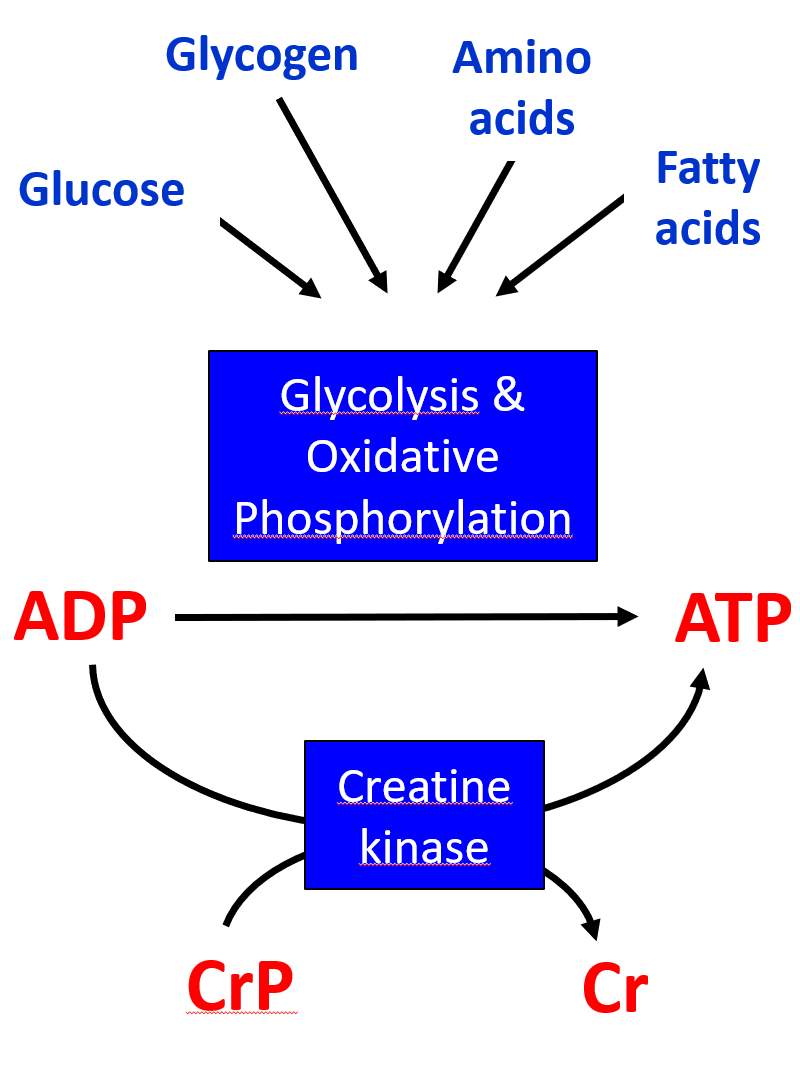Energy metabolism
Adenosine triphosphate (ATP) is the main energy currency of cells, while creatine phosphate (CrP) is considered as a buffer of high energy-bond phosphate that facilitates rapid regeneration of ATP from adenosine diphosphate (ADP). Cultured brain cells contain high amounts of both ATP and CrP. ATP is rapidly regenerated from adenosine diphosphate (ADP) in brain cells by creatine kinase, cytosolic glycolysis and/or mitochondrial oxidative phosphorylation. We are studying the potential endogenous and exogenous substrates that are able to maintain high cellular contents of ATP in brain cells and the transporters and enzymes that are involved in the respective metabolic pathways.

Recent publications
P. Spellerberg, R. Dringen (2026)
Consumption of L-proline as energy substrate by cultured primary rat astrocytes
Neurochem. Res.51:1 (doi: 10.1007/s11064-025-04618-1)
R. Dringen, G. Karger, U. Winkler, J. Hirrlinger (2025)
ATP Metabolism of astrocytes: Consumption, Regeneration and Restoration
Neurochem. Res. 50:357 (doi: 10.1007/s11064-025-04604-7)
G. Karger, R. Dringen (2025)
Coapplication of adenine with inosine or guanosine supports rapid ATP restoration by ATP-deprived cultured primary astrocytes
Neurochem. Res.50:275 (doi: 10.1007/s11064-025-04511-x)
G. Karger, J. E. Willker, A. R. Harders, P. Watermann, R. Dringen (2025)
ATP restoration by ATP-deprived cultured primary astrocytes.
Neurochem. Res. 50: 13 (doi: 10.1007/s11064-024-04276-9)
A. R. Harders, P. Watermann, G. Karger, S. C. Denieffe, A. Weller, A. C. Dannemann, J. E. Willker, Y. Köhler, C. Arend, R. Dringen (2024)
Consequences of a 2-deoxyglucose exposure on the ATP content and the cytosolic glucose metabolism of cultured primary rat astrocytes.
Neurochem. Res. 49, 3244-3262 (doi: 10.1007/s11064-024-04192-y)
A. R. Harders, P. Spellerberg, R. Dringen (2024)
Exogenous substrates prevent the decline in the cellular ATP content of primary rat astrocytes during glucose deprivation.
Neurochem. Res. 49, 1188-1199 (doi: 10.1007/s11064-024-04104-0)
G. Karger, J. Berger, R. Dringen (2024) Modulation of cellular levels of adenosine phosphates and creatine phosphate in cultured primary astrocytes.
Neurochem. Res 49, 402-414 (doi: 10.1007/s11064-023-04039-y)
A. R. Harders, C. Arend, S. C. Denieffe, J. Berger, R. Dringen (2023)
Endogenous energy stores maintain a high ATP concentration for hours in glucose-depleted cultured primary rat astrocytes.
Neurochem. Res. 48, 2241-2252 (doi: 10.1007/s11064-023-03903-1)
